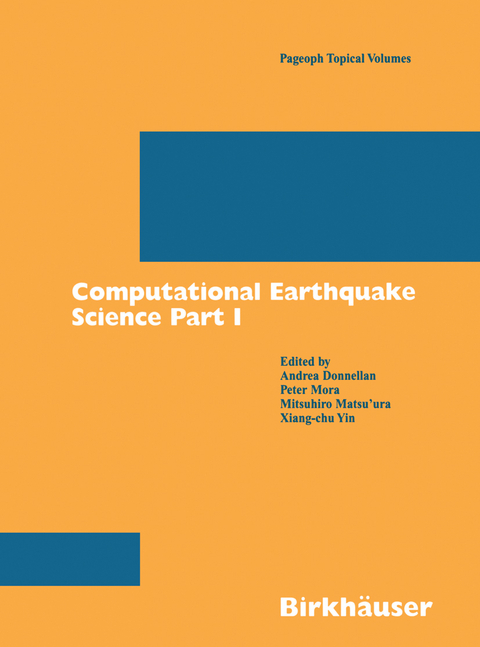
Computational Earthquake Science Part I
Springer Basel (Verlag)
9783764371425 (ISBN)
Exciting developments in earthquake science have benefited from new observations, improved computational technologies, and improved modeling capabilities. Designing models of the earthquake of the earthquake generation process is a grand scientific challenge due to the complexity of phenomena and range of scales involved from microscopic to global. Such models provide powerful new tools for the study of earthquake precursory phenomena and the earthquake cycle. Through workshops, collaborations and publications the APEC Cooperation for Earthquake Simulations (ACES) aims to develop realistic supercomputer simulation models for the complete earthquake generation process, thus providing a "virtual laboratory" to probe earthquake behavior.
Part I of the book covers microscopic simulations, scaling physics and earthquake generation and cycles. This part also focuses on plate processes and earthquake generation from a macroscopic standpoint.
A. Microscopic Simulation.- Statistical Tests of Load-Unload Response Ratio Signals by Lattice Solid Model: Implication to Tidal Triggering and Earthquake Prediction.- Long-range Stress Redistribution Resulting from Damage in Heterogeneous Media.- Review of the Physical Basis of Laboratory-derived Relations for Brittle Failure and their Implications for Earthquake Occurrence and Earthquake Nucleation.- Particle Dynamics Simulations of Rate- and State-dependent Frictional Sliding of Granular Fault Gouge.- The Dependence of Constitutive Properties on Temperature and Effective Normal Stress in Seismogenic Environments.- A Constitutive Scaling Law for Shear Rupture that is Inherently Scale-dependent, and Physical Scaling of Nucleation Time to Critical Point.- Critical Sensitivity in Driven Nonlinear Threshold Systems.- Intermittent Criticality and the Gutenberg-Richter Distribution.- Ergodicity in Natural Fault Systems.- Focal Mechanism Dependence of a Few Seismic Phenomena and its Implications for the Physics of Earthquakes.- Continuum Fractal Mechanics of the Earth's Crust.- Using Eigenpattern Analysis to Constrain Seasonal Signals in Southern California.- Accelerating Precursory Activity within a Class of Earthquake Analogue Automata.- Dynamical System Analysis and Forecasting of Deformation Produced by an Earthquake Fault.- 3-D Modelling of Plate Interfaces and Numerical Simulation of Long-term Crustal Deformation in and around Japan.- GeoFEM Kinematic Earthquake Cycle Simulation in Southwest Japan.- Finite Element Analysis of Fault Bend Influence on Stick-Slip Instability along an Intra-Plate Fault.- Quasi-static and Quasi-dynamic Modeling of Earthquake Failure at Intermediate Scales.
| Erscheint lt. Verlag | 27.9.2004 |
|---|---|
| Reihe/Serie | Pageoph Topical Volumes |
| Zusatzinfo | VI, 298 p. 41 illus., 12 illus. in color. |
| Verlagsort | Basel |
| Sprache | englisch |
| Maße | 193 x 260 mm |
| Gewicht | 630 g |
| Themenwelt | Naturwissenschaften ► Geowissenschaften ► Geologie |
| Naturwissenschaften ► Geowissenschaften ► Geophysik | |
| Schlagworte | computer simulation • Dynamics • Earthquake • Erdbeben • Finite Element Method • Modeling • Simulation |
| ISBN-13 | 9783764371425 / 9783764371425 |
| Zustand | Neuware |
| Informationen gemäß Produktsicherheitsverordnung (GPSR) | |
| Haben Sie eine Frage zum Produkt? |
aus dem Bereich


